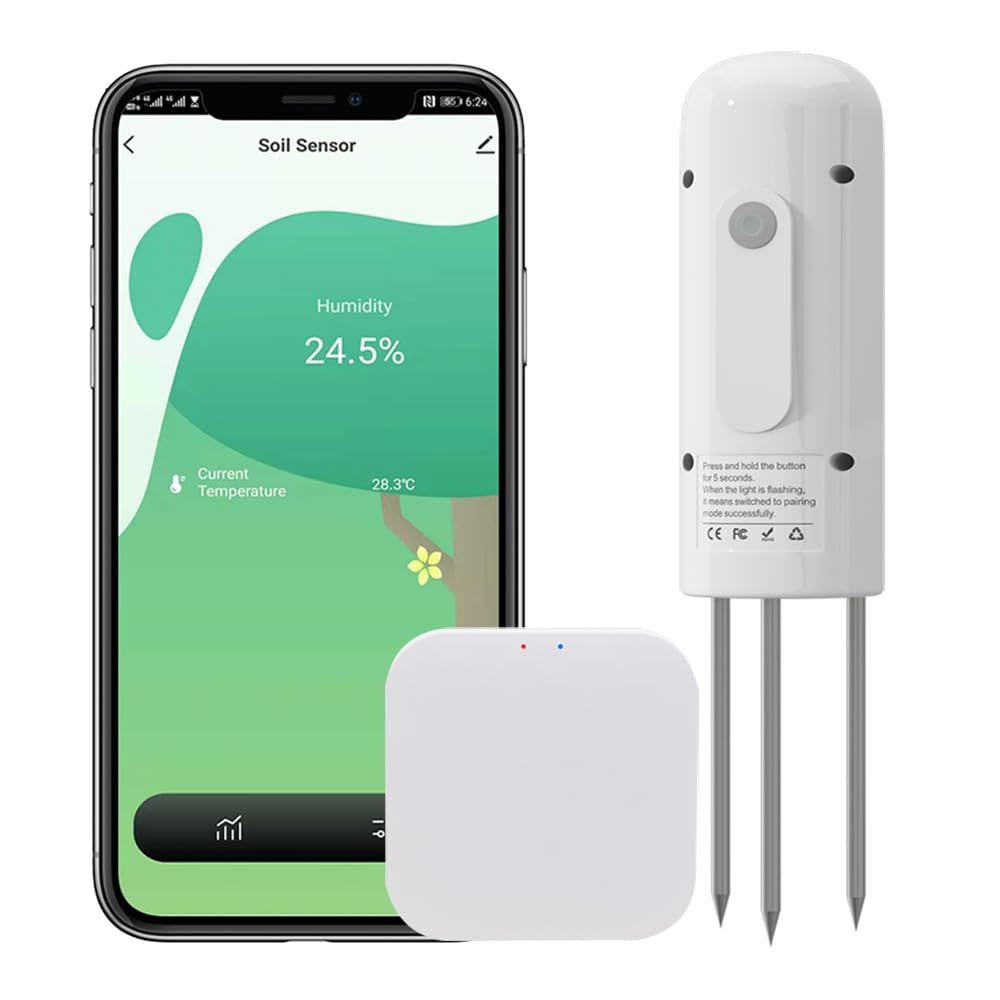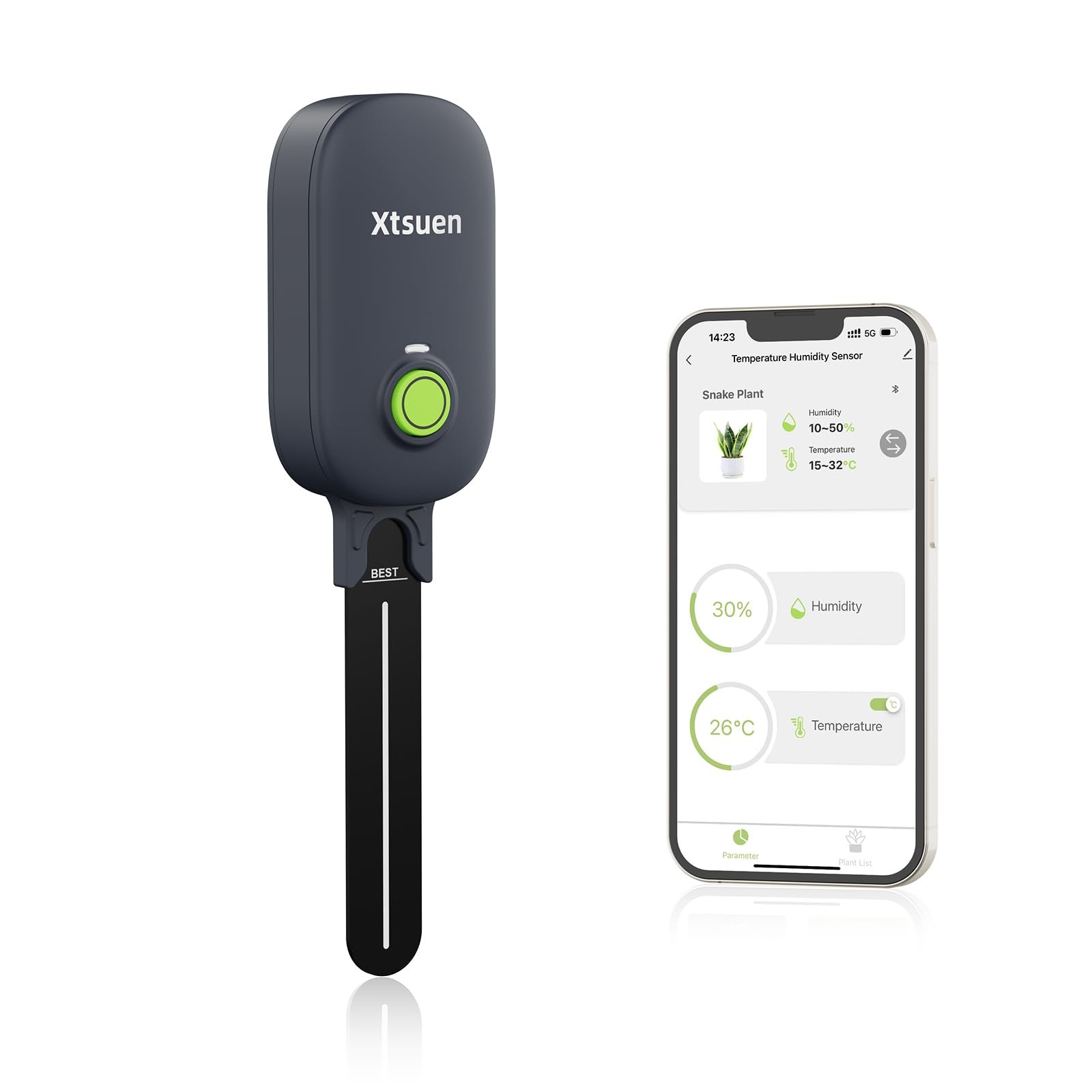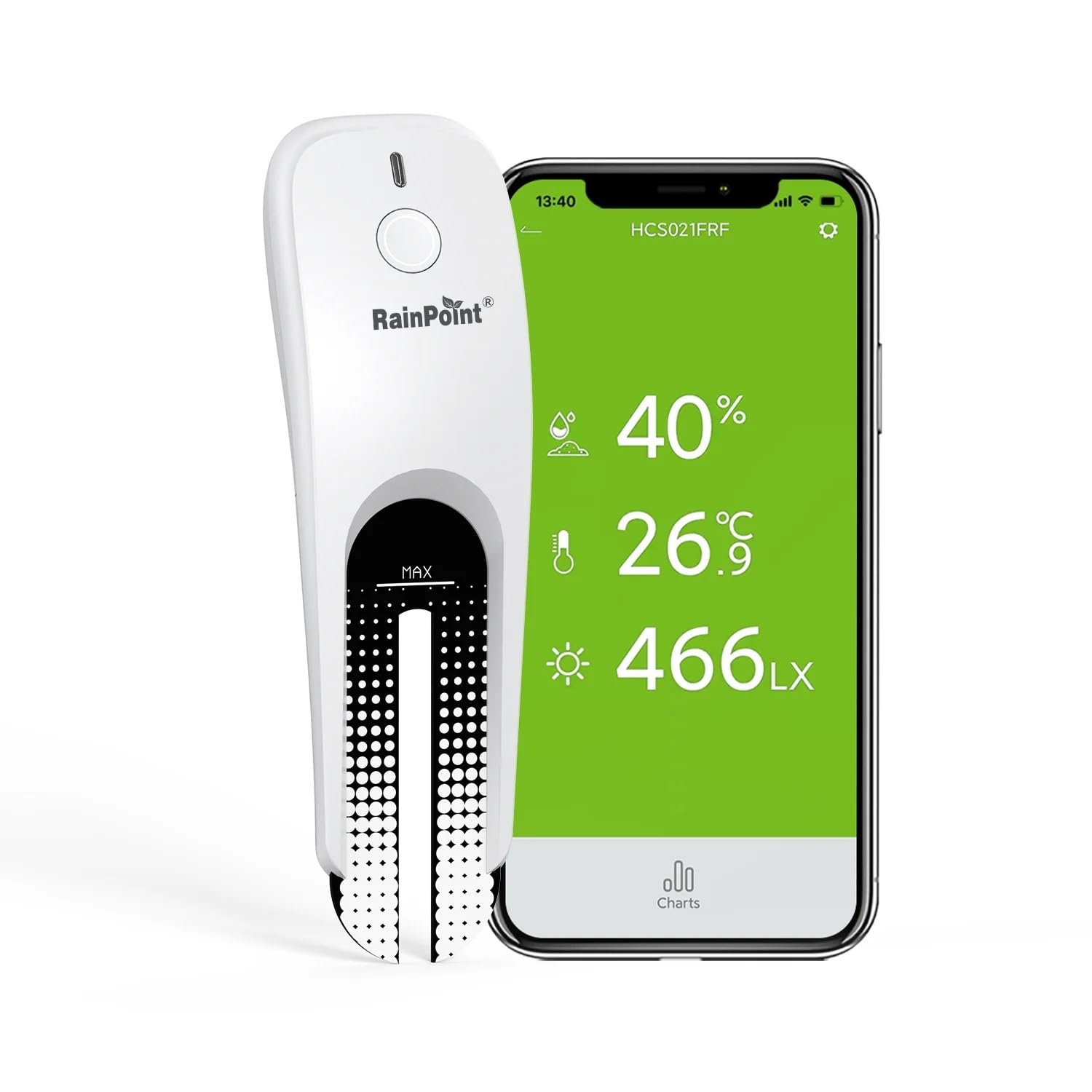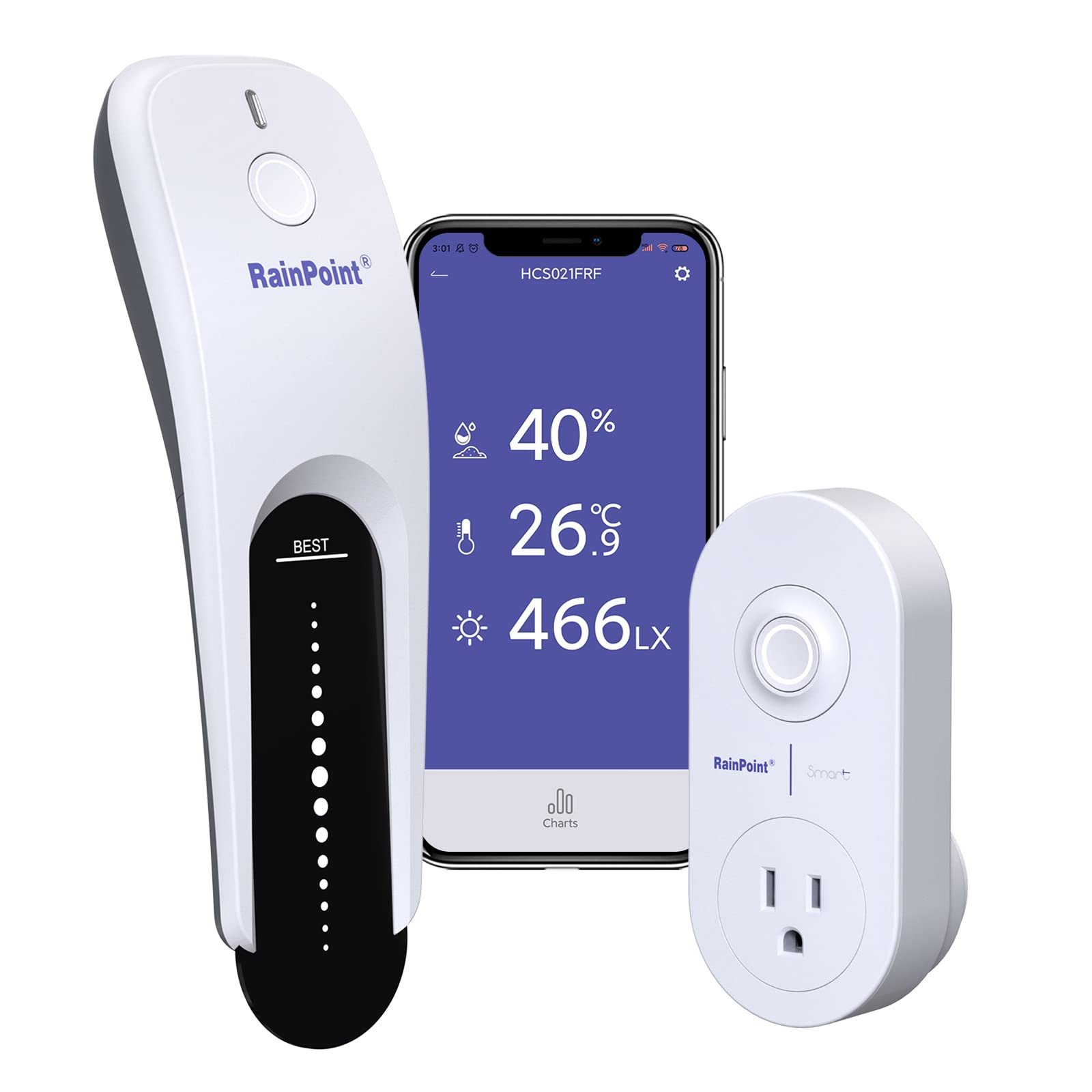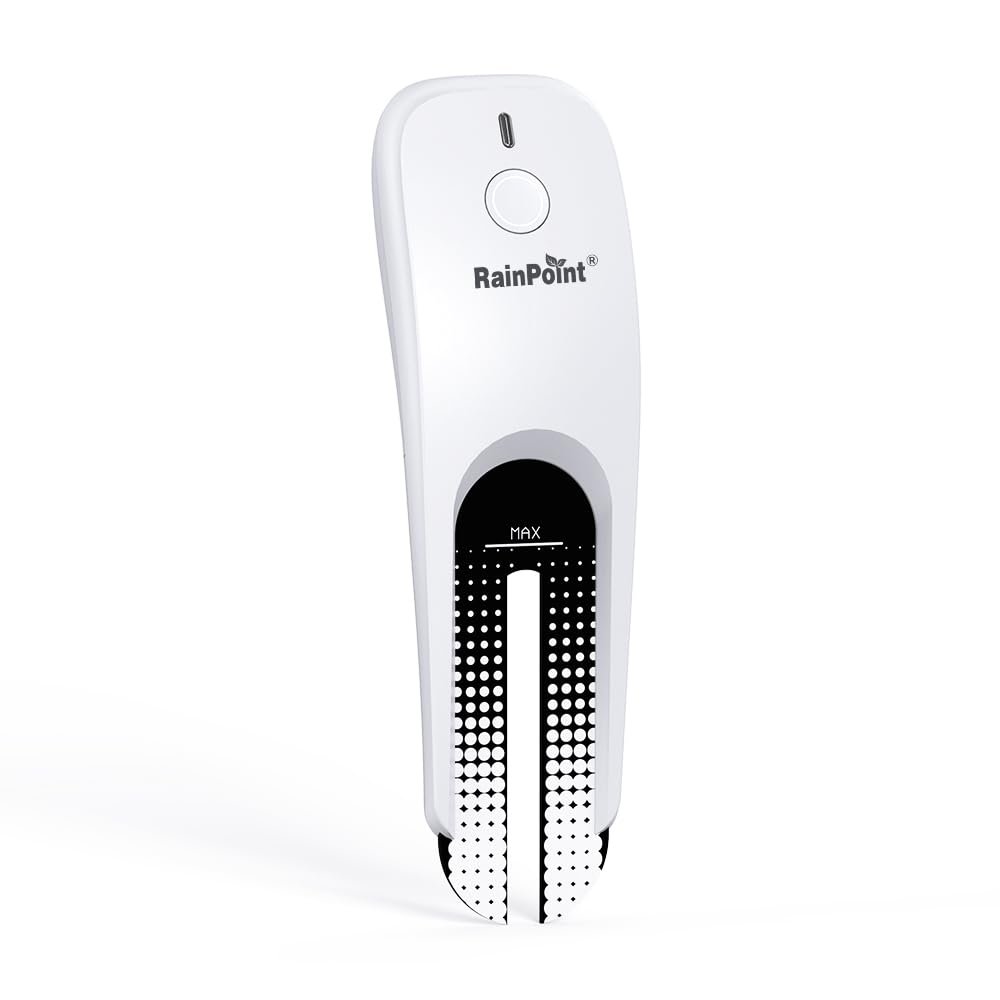Gardening brings a sense of joy and accomplishment, especially when plants thrive due to proper care.
In today’s tech-driven world, smart planting sensors have emerged as essential tools for gardeners looking to monitor their plants’ health with ease.
These devices can provide valuable insights into soil conditions, moisture levels, and environmental factors, helping you maintain a flourishing garden without constant guesswork.
When shopping for smart planting sensors, there are key features to consider.
You should look closely at the sensor’s accuracy in readings, its connectivity options (like Bluetooth or Wi-Fi), and how user-friendly the accompanying mobile app is.
Battery life and durability are also crucial since you want tools that can withstand outdoor conditions while providing reliable data over time.
After sifting through various options and analyzing their features, I found several smart planting sensors that truly stand out for promoting healthy gardens.
Let’s explore these options, focusing on what makes each one a great choice for any gardening enthusiast.
Best Smart Planting Sensors for Healthy Gardens
As someone who loves my garden, I’ve found that using smart planting sensors really takes my gardening game to the next level.
These handy devices help me keep track of soil conditions, moisture levels, and more, ensuring my plants stay healthy and happy.
Check out my top picks for the best smart planting sensors that can transform your gardening experience!
GIEXSMART Soil Moisture Sensor
I found the GIEXSMART soil moisture sensor useful for keeping tabs on my garden’s hydration levels.
- Integrates easily with existing smart irrigation systems for efficient watering.
- Provides real-time soil moisture updates directly to your phone.
- Designed with outdoor durability in mind, featuring waterproof housing.
- Requires a separate hub, which isn’t very clear initially.
- Setup can be tricky; I had some trouble with the app finding the device.
- The size may not be ideal for indoor setups as it appears bulky.
Using the GIEXSMART soil moisture sensor definitely helps keep my plants healthy.
The moment my soil becomes too dry, the device sends a notification straight to my phone.
I’ve noticed the automatic watering feature is quite a game changer for those days when I forget to water.
On the flip side, I was surprised to learn that it needed a hub to operate efficiently.
Initially, I thought it was a standalone device.
This led to some confusion during the setup since I had to figure out compatibility issues with other smart home products.
Despite the setup hurdles, I appreciate its real-time monitoring capabilities.
It tracks both soil moisture and temperature, which is great for someone like me who often plants a mix of different species that have varying needs.
Over time, I feel confident it will make managing my garden much less of a chore.
Xtsuen Bluetooth Soil Moisture Meter
I found the Xtsuen Bluetooth Soil Moisture Meter to be a handy tool for managing my indoor plants effectively.
- Quick and accurate soil moisture readings
- Bluetooth connectivity for easy monitoring
- Customizable app for tracking various plants
- Can be challenging to set up initially
- Limited to one plant per sensor
- Battery compartment can be tricky to access
Using the Xtsuen has made my watering schedule much simpler.
This soil moisture meter provides data in just two seconds, which is quite convenient.
I appreciate being able to check moisture and air temperature directly on my phone through the app, making it easier to keep tabs on my plants when I’m busy.
Setting it up took a bit of patience.
I had to realize I needed to unscrew the back to insert the batteries first.
Once I got it going, pairing it with my phone was speedy.
The alerts it sends for moisture levels help me avoid over or under-watering, and the app’s data on common plants is a nice touch.
While it’s a great tool, I did find it somewhat limiting.
You can only use it for one plant at a time, which isn’t ideal if you have multiple pots to manage.
Nevertheless, I still think it’s a solid choice for anyone looking to enhance their plant care routine.
RainPoint 3-in-1 Smart Soil Meter
This soil moisture meter is a game changer for my garden, offering real-time insights to help keep my plants thriving.
- Easy to connect and access data via a smartphone app.
- Monitors moisture, temperature, and light levels effectively.
- Sturdy construction ensures durability for outdoor use.
- Setup may be tricky for those unfamiliar with smart devices.
- Lacks a hub, which limits certain functionalities.
- Some features may take time to fully understand.
Using the RainPoint 3-in-1 Smart Wireless Soil Moisture Meter has transformed my plant care routine.
The app provides real-time data on moisture levels, temperature, and light exposure, which has helped me make better decisions for my plants.
The ability to monitor all these factors at once is something I didn’t know I needed until I tried it.
Another benefit is the scientific approach this meter offers.
By selecting my specific soil type in the app, I get tailored moisture readings.
This feature significantly minimizes the risk of over or underwatering, which has been a common challenge for me in the past.
It feels great to finally have confidence in my watering schedule.
On the flip side, I found the initial setup to be a bit complicated.
It took some time to connect it to my Wi-Fi and get everything rolling.
Additionally, it would be nice if it included a hub to enhance functionality further.
Still, once it’s up and running, the performance is worth the effort.
This device has truly elevated my gardening experience.
RAINPOINT Soil Moisture Meter
I think the RAINPOINT Soil Moisture Meter could be a great addition to your gardening routine if you’re looking for a reliable way to monitor your plants.
- Measures moisture, temperature, and sunlight in one device.
- App control offers convenient data viewing and sharing.
- Pairs well with an irrigation system for smarter watering schedules.
- Some users report connectivity issues with the app.
- Battery life could be improved for continuous operation.
- Accuracy has been questioned by a few users.
When I first tried out the RAINPOINT Soil Moisture Meter, I was impressed by its sleek design and ease of use.
The ability to test soil moisture, temperature, and sunlight levels all in one go really made it stand out for me.
I could easily check when my plants needed a drink without digging around in the dirt.
Using the Homgar app was intuitive, and I loved being able to remotely monitor the soil conditions.
Just one glance at my phone, and I knew whether my garden was thriving or needed attention.
The charting feature that shows data over time is particularly helpful for understanding trends in my garden’s health.
However, I did encounter some hiccups.
A few times, my connectivity with the app dropped, which was frustrating when I was relying on it for real-time updates.
While the sensor did give me a good ballpark figure for moisture levels, I found myself occasionally cross-checking with a traditional meter just to be safe.
All in all, if you value technology in your gardening and appreciate having multiple readings at your fingertips, the RAINPOINT could really enhance your green thumb efforts.
BALDR Wi-Fi Soil Moisture Meter
This sensor is a fantastic addition if you want to better understand your garden’s needs.
- Easy to use and set up in the garden.
- Real-time data on soil conditions helps with better care.
- Historical insights guide future planting decisions.
- Requires a separate gateway for full functionality.
- Limited use without the compatible hub.
- Might be less useful for small indoor gardens.
Recently, I got my hands on the BALDR Wi-Fi Soil Moisture Meter, and it’s been quite the game changer for my gardening routine.
Setting it up was a breeze; I just inserted it into my soil, and it instantly started collecting data.
The real-time readings for soil temperature, humidity, and light levels helped me adjust my watering schedule, leading to healthier plants.
It’s not just about the immediate readings; I appreciated having access to historical data.
It provided context for my gardening practices, allowing me to tweak my planting strategies based on what worked in the past.
Collaborating with family members through the app was also a fun feature, making gardening a shared hobby.
The only hiccup is needing the compatible gateway for it to function fully.
If you don’t have that, the sensor can’t do much on its own.
For larger outdoor gardens, this tool offers valuable insights and can significantly improve plant health.
Buying Guide
When choosing smart planting sensors, I consider a few key features essential.
Here’s a quick rundown of what to look for:
| Feature | Importance |
|---|---|
| Soil Moisture Sensors | I want to know when to water my plants. |
| Temperature Sensors | Monitoring temperature helps in keeping plants healthy. |
| Light Sensors | These tell me if my plants are getting enough sunlight. |
| Mobile App Compatibility | It’s great if I can access my garden’s data on my phone. |
| Battery Life | Longer battery life means less hassle for me. |
I also think about ease of installation.
I prefer sensors that are straightforward to set up.
Cables and complicated instructions can be a barrier.
Wireless connectivity is another feature I value.
I like to receive real-time updates without having to fuss with wires.
Durability matters too.
My sensors should withstand outdoor conditions like rain or extreme temperatures.
Lastly, let’s not forget compatibility with other smart devices.
Integration with systems I already have makes my gardening experience much smoother.


